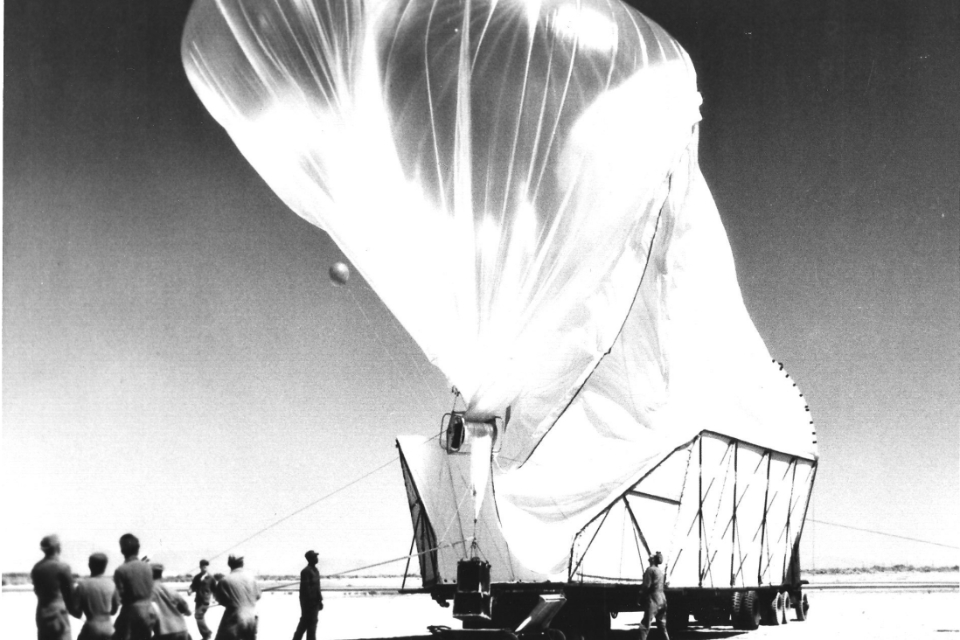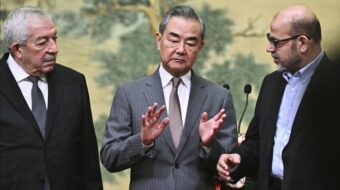
LONDON—On Feb. 3, 1956, astonished residents in the U.K. towns of Lewisham, Pinner, and Farnborough were greeted with the news that several U.S. propaganda balloons had crash-landed locally.
Appearing in the local press and the publication World News, the report brought the Cold War to Britons’ very doorsteps, quite literally.
This was not the first landing of such large balloons. They were used to carry anti-communist propaganda into Eastern Europe, regularly over Hungary and Czechoslovakia and even as far as the Soviet Union.
This particular large air-space balloon was simply off-course and caused no damage. But in Czechoslovakia, for example, this kind of high-pressure publicity stunt extolling Western ideas had been going on for some two years. Around 400,000 balloons were counted in the skies of Czechoslovakia, carrying an estimated 250 million leaflets.
As farmers found out, the balloons’ debris could cause animals to choke. The big U.S. balloons were filled with hydrogen—the explosive gas that doomed the Hindenberg back in 1937—and included a container box for dropping the leaflets and an explosive device which opened the box.

As a result of the bang the balloons made when scattering their propaganda sheets, many Czechoslovak citizens were burned or otherwise injured by debris. (When President Joe Biden was faced with the recent “Chinese spy balloon” over the U.S. and worried about the debris, he had it shot down over the Atlantic Ocean.)
The U.S. Cold War propaganda balloons had a diameter of from 20 to 25 feet, and, floating freely at various altitudes, endangered air transport, electricity pylons, farm buildings, and oil depots.
As these balloons were landing for nigh on two years, their composition was well known, as was the source—Radio Free Europe—a propaganda broadcasting organization dependent upon U.S. funding. The balloons were mostly launched from West Germany.
They were carried toward their targets by the prevailing westerly winds, common over western and central Europe, with the periodic eastern and northern winds and occasional southerly sirocco winds. Eastern winds could be the cause of the off-course English balloons of 1956.
Seeing this ability to shower paper over socialist countries as a potentially powerful weapon in the war of ideas, the U.S. moved to manufacture even more sinister balloons. This new type was first deployed early in 1956 and was fitted with equipment designed for aerial photography, and for radio-technical maneuvering of the balloons, all of which were manufactured in the U.S.
On Feb. 9, 1956, at a Moscow press conference with over 100 journalists, Soviet technical expert Colonel Tarantsov described these balloons:
“A sphere inflated with hydrogen gas of nearly 1,600 cubic meters [56,000 cubic feet], with a carrying capacity of some 650-700 kilograms [1,433 to 1,543 lbs]. The envelope is made of thin, transparent organic fabric. There is a two-lens aerial camera with a considerable supply of film and a technical device for determining the coordinates of the locality surveyed; radio-technical equipment to control the balloon all along the route of its flight from the ground, to keep it at a uniform height by exhausting the ballast; an automatic camera control device; and parachuting equipment to operate over the final points of flights.”
These were long-haul flights, with a final planned destination in Japan. They were intended to cross the full length of the socialist bloc. Inevitably, such a press conference, talking about flying cameras and photographic equipment over the Soviet Union for military purposes, implied the need for serious negotiation to prevent confrontation.
Balloons were the latest, up-to-date weapons of the Cold War. Soviet diplomats complained the balloons “constitute a flagrant violation of international law,” and said “the whole purpose of using them is part of the attempt to maintain the ‘brink of war’ policy of John Foster Dulles,” referring to the U.S. Secretary of State.

Dulles even tried to impose a ban on the release of information concerning the U.S. balloons, but this failed, aided by the interest shown by the anti-imperialist press around the world and serious international worries about what the Americans were up to.
Soviet leader Nikita Khrushchev and the USSR’s diplomats complained of the flagrant violation of Soviet airspace, not to mention the danger of a wider conflict posed by the balloons.
On Feb. 4 Moscow issued a formal protest to the White House, and within a few days, President Dwight Eisenhower ordered Dulles to stop the use of his military spy balloons.
This scuttling of the balloon espionage and the press conference in Moscow gave a boost to the position of Khrushchev, just in time for the 20th Congress of the Communist Party of the Soviet Union, which started ten days later.
Meanwhile, the controversy over spy balloons would go mostly dormant—until 2023 amidst Washington’s new Cold War against China.
Slightly edited from a story earlier published by Morning Star.












Comments